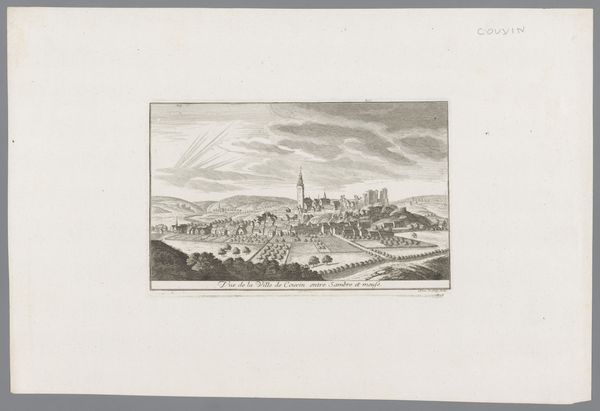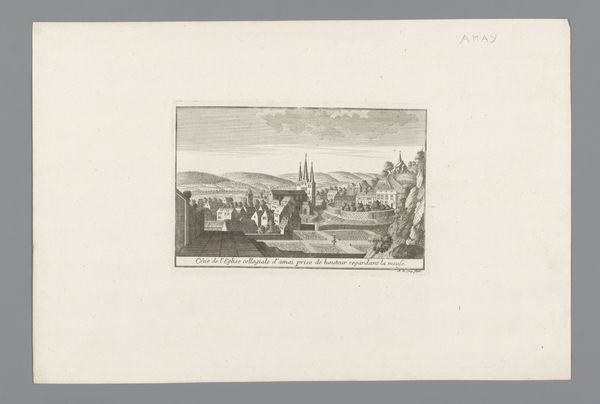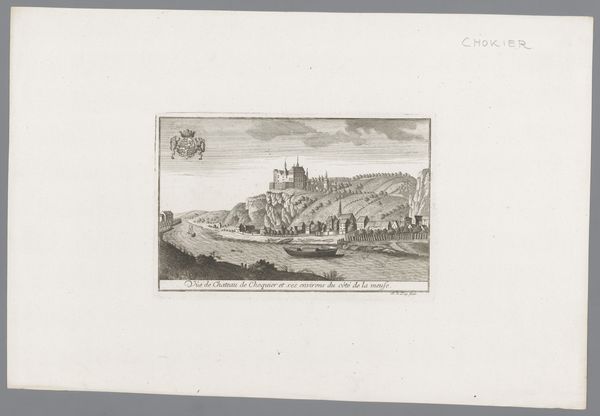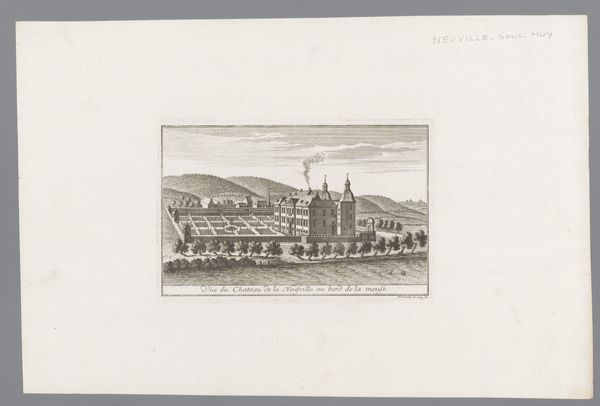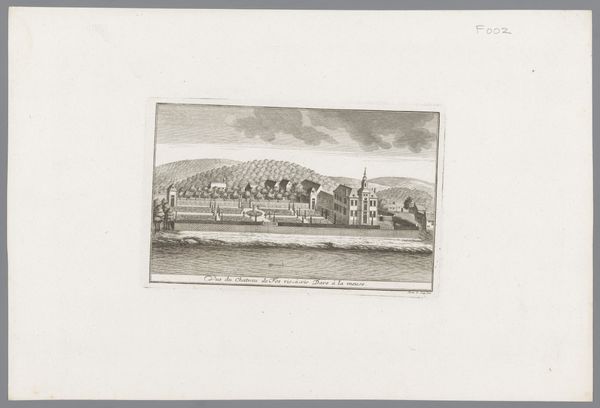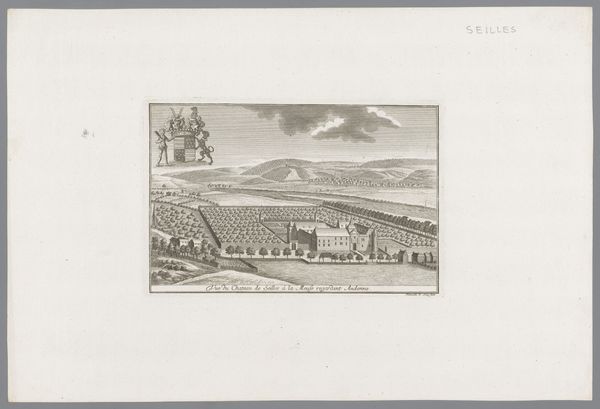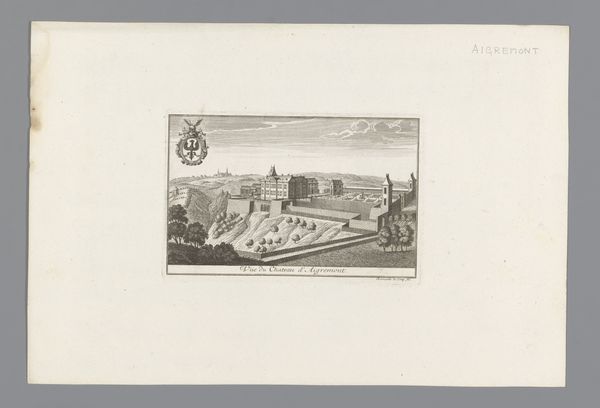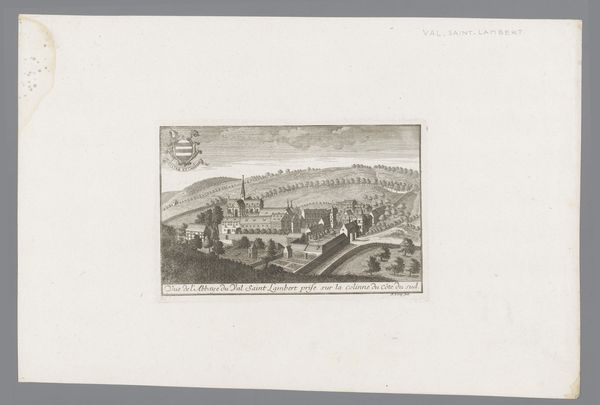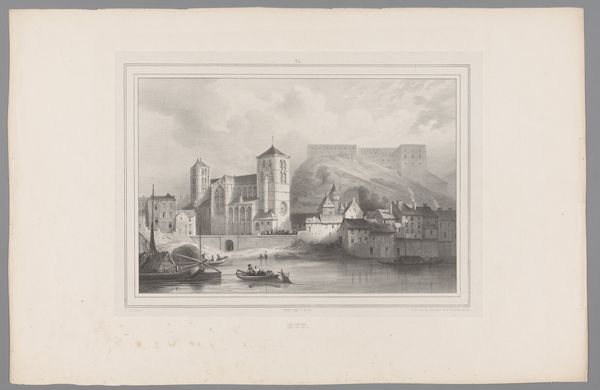
print, engraving, architecture
#
baroque
# print
#
landscape
#
cityscape
#
engraving
#
architecture
Dimensions: height 144 mm, width 220 mm
Copyright: Rijks Museum: Open Domain
Curator: Here we have an intriguing piece—a baroque engraving titled "Gezicht op het kasteel te Ampsin," or "View of the castle at Ampsin," dating from about 1738 to 1744. It is created by an anonymous artist. Editor: It certainly captures a certain formality of the era. The careful hatching to create the tones is amazing. What jumps out at me, though, is how much this is about controlling nature. Curator: Absolutely. The composition emphasizes human dominion over the landscape, but I am compelled by the materials used. The fine lines achieved through engraving demonstrate exceptional skill and craftsmanship in printmaking traditions of the 18th century. You can also tell that this print was reproduced so that it could reach more eyes than if it were an original drawing or painting. Editor: Agreed, engravings allowed for broader circulation, shaping public perception of places like Ampsin and the cultural importance of castles. I wonder, what would people use these images for? To showcase wealth? Validate status? It speaks to power, the castle on the hilltop surveyed by common people. Curator: Perhaps all of the above. The engraving, beyond being an artistic object, is a testament to the material conditions of its time. This required specialized tools and training, reflecting a particular socio-economic structure of artistic production. Editor: Yes, how the work functions and who it was for interests me, but I cannot deny the pleasure derived from just gazing upon it. I love the light contrasted against shadow. It is idyllic. Curator: In closing, it allows us to see art as an intersection of intention and historical context. Editor: Indeed. Viewing a single print, like this view of Ampsin, provides layers for deeper social questions about class, influence and representation.
Comments
No comments
Be the first to comment and join the conversation on the ultimate creative platform.

